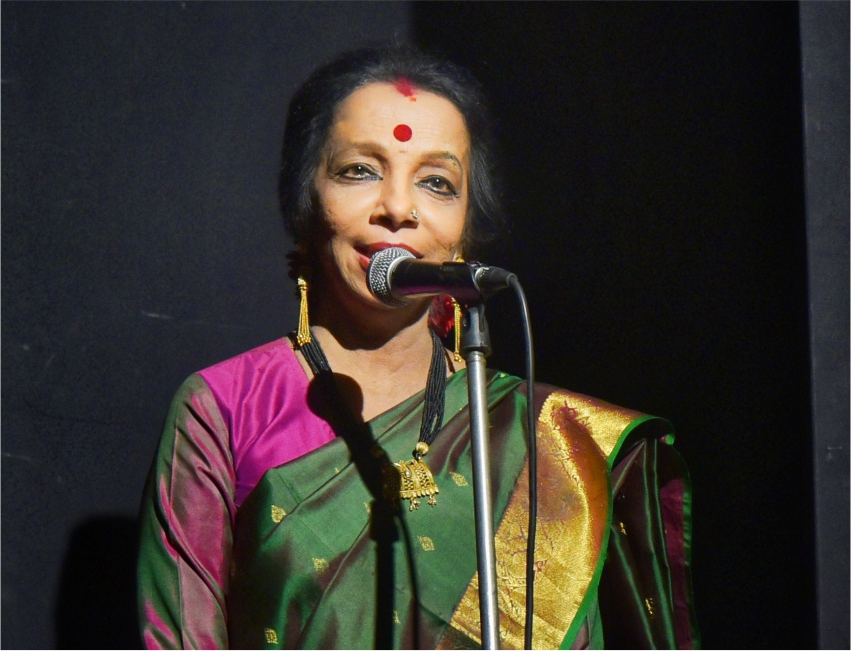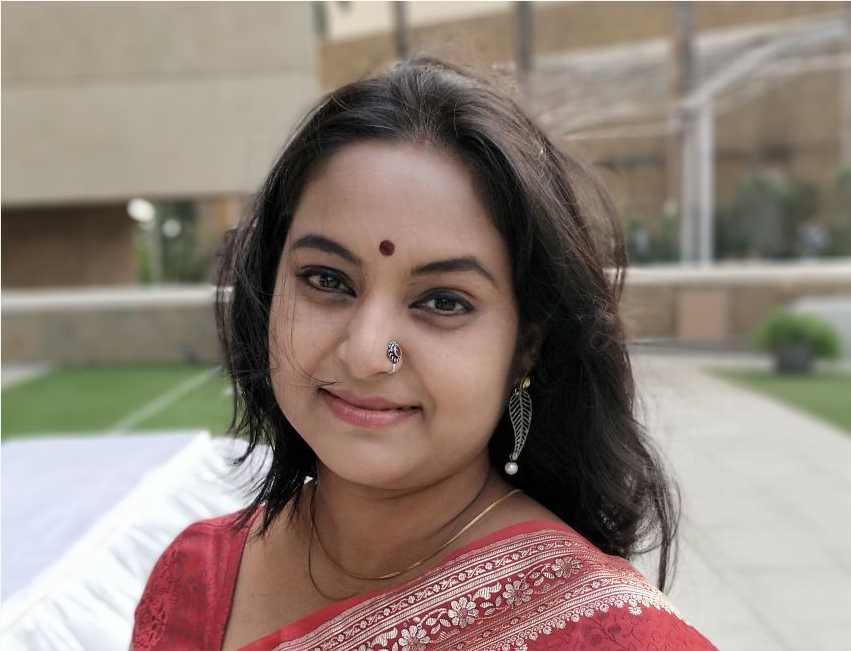Woman Empowerment Through Dance - Aparna Menon

- Sandip Soparrkar
- 19 Sep, 2024
Dance Trance by Sandip Soparrkar
Storytelling has always been integral to Indian classical dance forms, allowing for the rich depiction of mythological, historical, and contemporary narratives through various classical arts. A recent show titled "Aneka," featuring Bharatanatyam dancer Aparna Menon in collaboration with Odissi artist Sharmila Mukherjee, showcased a remarkable synergy between two highly skilled performers. The performance delved into the lesser-known stories of Yashodhara and Kaikeyi, exploring themes of womanhood with profound sensitivity. Both artists masterfully used classical dance to illuminate the depth and diversity of female experiences in mythology. Their combined effort highlighted the emotional and cultural richness of these tales, offering a fresh perspective on ancient stories. I had the opportunity to speak with the excited Aparna Menon about the show and its reception. The following are excerpts from our interview, where she shared insights into the creative process and audience response:
Can you please share a bit about your background and education in dance?
I am an 'A' grade artist with Doordarshan and an empanelled artist for the Festival of India abroad. My academic journey includes an MA degree in Bharatanatyam from Thanjavur University and an MBA in Finance from Symbiosis, Pune. I am a senior disciple of Guru B. Bhanumathi and Smt. Sheela Chandrashekhar from Bangalore. Over the years, I've had the privilege to perform on prestigious stages across India, including the Central Sangeet Natak Akademi in Delhi, Doordarshan, and the Mysore Dasara Festival, among others.
Please tell us more about ‘Aneka’ and its significance?
Aneka is an initiative that brings together Yashodhara (played by me) and Kaikeyi (showcased by renowned dancer Sharmila Mukherjee) under the theme "Infinity Shades of Womanhood." This collaboration aims to present a multifaceted view of female experiences and challenges. By juxtaposing these two characters, we offer audiences a richer understanding of the struggles and triumphs of women.
How did your collaboration with Mrs. Sharmila Mukherjee come about?
Sharmila Mukherjee, a distinguished Odissi exponent from Bangalore, and I have had a close association for years. We were both interested in highlighting complex female characters from mythology. Mrs. Mukherjee had previously presented Kaikeyi, which also explores the turmoil of a woman's life. We decided to combine our works to address various aspects of womanhood through our performances.
What role did Mrs. Mukherjee play in this collaboration?
Mrs. Mukherjee’s contribution was significant. Her piece, Kaikeyi, is an Abhinaya-based performance with elements of Odissi dance. It reinterprets the traditional portrayal of Kaikeyi as merely a scheming queen, instead highlighting her complex emotions and deep love for both her son and Ram. The performance, which includes a script by Pt. Nityanand Mishra, music by Shri Bijoy Jena, rhythm composition by Shri Dhaneshwar Swain, and choreography by Mrs. Mukherjee herself offers a nuanced portrayal of a character often misunderstood.
How did the concept of your project, Yashodhara, come about?
The concept for Yashodhara emerged from my desire to portray a strong, empowered female character in a solo performance. While many dancers have explored figures like Sita, Draupadi, and Radha, I wanted to highlight a lesser-known heroine. Yashodhara, the wife of Buddha, intrigued me because she, too, was enlightened yet remained dedicated to her roles as a mother and queen. The narrative I created for Yashodhara shows her as a teenager who falls in love with Gautama Buddha and marries him, despite knowing his spiritual journey would lead him away from her. She faces numerous challenges, including punishment from her father, but ultimately embraces her role as both mother and father to their son, while also becoming a Buddhabikuni, inspiring others to detach from worldly desires for the greater good.
What kind of research did you undertake for this show, and who assisted you?
Yashodhara blends historical facts with a touch of fiction. My primary source of inspiration was a book on Yashodhara by writer Volga. I wrote the English script and had it translated into Sanskrit by Shri Arjun Bharadwaj. This collaborative effort ensured the authenticity and depth of the performance.
Do you give credit to the entire crew and technical team involved in Yashodhara?
A huge team supported me. Without them this show would never have happened: Sanskrit Translation by Arjun Bharadwaj, Music by Karnataka Kalashree D.S. Srivatsa, Nattuvangam was Shri Prasanna Kumar, Mridangam: N. Narayana Swamy, Flute: Mahesh Swamy, Violin: Shreenidhi Mathur, Script and Choreography was by me. Their contributions were invaluable in bringing this production to life.
You have performed this show at a few festivals right? How was the response to Yashodhara?
The response has been overwhelmingly positive. At the Soorya Festival and other venues, including NCPA in Mumbai, the performance has resonated deeply with audiences from diverse backgrounds. The theme of women empowerment, which is central to Yashodhara, has particularly struck a chord. Our performance at Chowdiah Memorial Auditorium was a sold-out show, highlighting the strong reception of the work.
What are your future plans after Yashodhara?
I aim to present Yashodhara on as many stages as possible to reach a wider audience. Additionally, I am working on a new production that delves into the philosophical dilemmas of human life. This next project will continue to explore deep, meaningful themes through dance.



